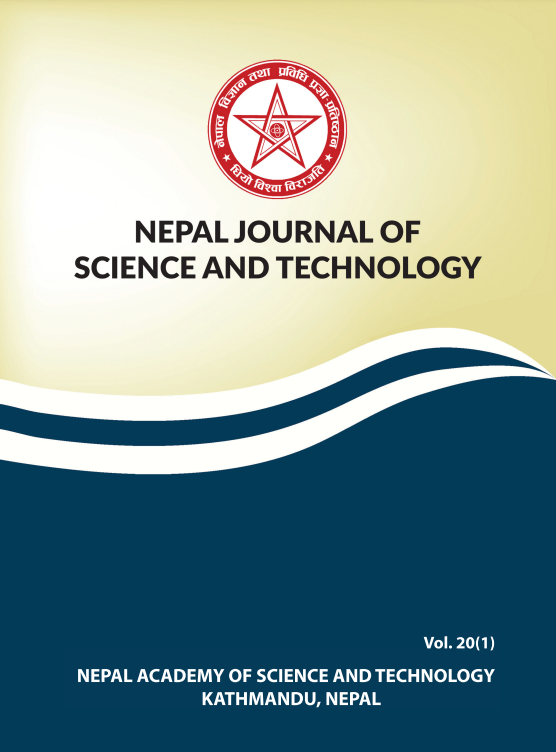Detection of Common β-Globin Gene Mutation in Eastern Nepal by Multiplex Amplification Refractory Mutation System Polymerase Chain Reaction System
DOI:
https://doi.org/10.3126/njst.v20i1.43358Keywords:
MARMS, , PCR-polymerase chain reaction, Beta-thalassemia, Haemoglobinopathies, MutationsAbstract
β-thalassemia is the most common autosomal recessive haemoglobin disorder worldwide. Although more than 200 β-thalassemia mutations have been reported, few ethnic group-specific alleles account for 90-93% of the β-thalassemia alleles in each population. The primary purpose of the study was to identify the prevalence of different types of beta-thalassemia mutations in the study group, and to establish a genotype-phenotype correlation. Complete blood count, peripheral blood smeacr, capillary electrophoresis and multiples arms refractory mutation system based polymerase chain reaction (MARMS) were performed on the peripheral blood samples to detect beta mutations at Decode Genomics and Research Centre, Sinamangal Kathmandu. The MARMS-PCR technique was applied for the detection of nine common mutations IVS1- 5(G>C), 619 bp del, FS8/9 (+G), IVS1-1 (G>T), FS 41/42 (-CTTT), C-15 (G>A). FS 16 (-C), C-30 (G>C) and C-5 (-CTCT). In the study group, three mutations, C-15(G>A), C-26 (Glu-Lys) and IVS1-5 (G>C) were detected. The study revealed a characteristic mutational profile in the five ethnic groups of eastern Nepal. It is the first report of HbE in the Koch Rajbanshi of eastern Nepal. The mutation C-15 reported as rare by earlier workers was the most common mutation identified in this research work.
Downloads
Downloads
Published
How to Cite
Issue
Section
License
Copyright (c) 2021 Gita Shrestha, Nanda Bahadur Singh, Priti Shrestha, Chitra Baniya

This work is licensed under a Creative Commons Attribution-NonCommercial 4.0 International License.
Authors retain copyright and grant the journal right of first publication.




